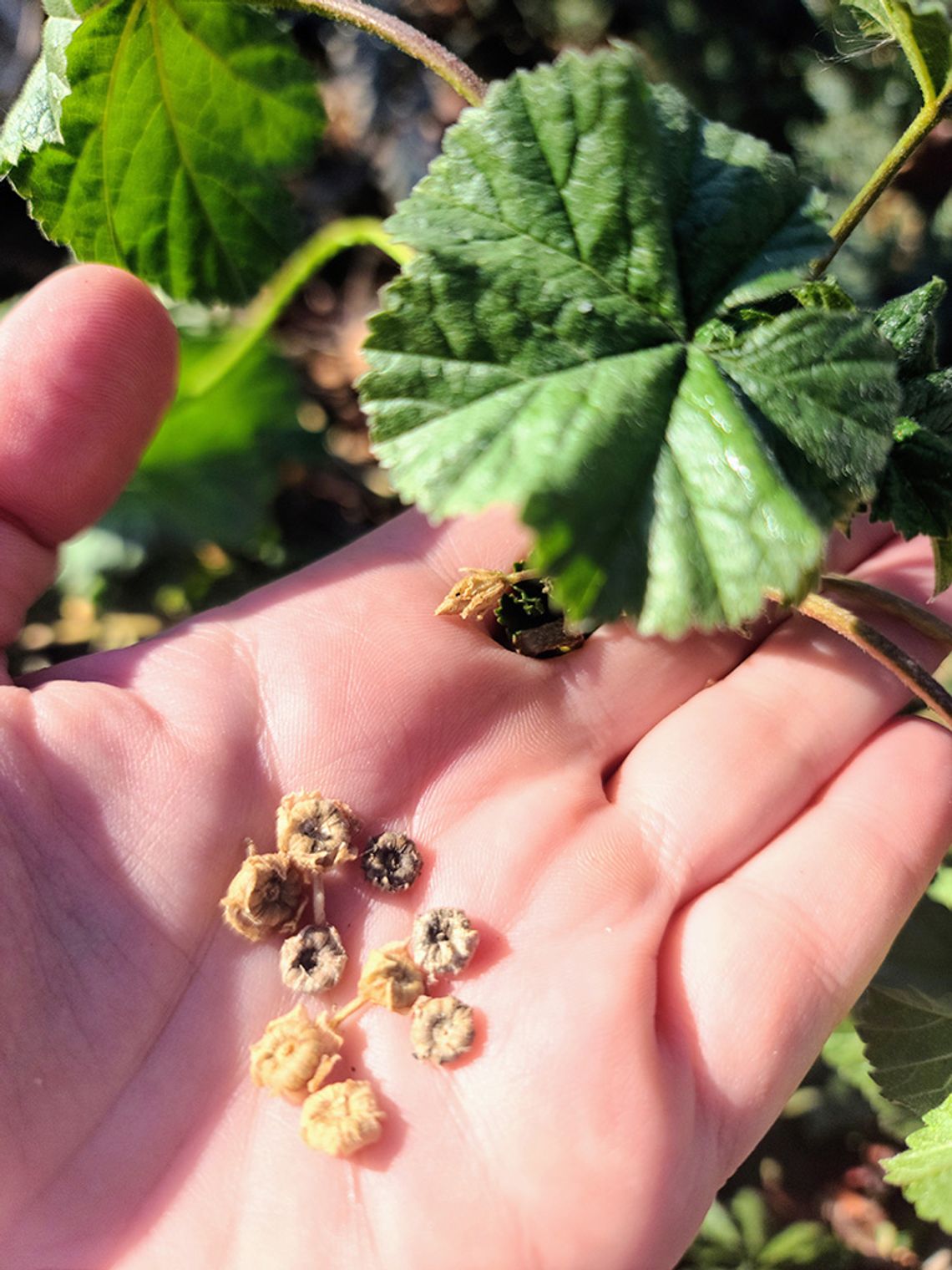The warm weekend found me checking eagerly for signs of life in my garden. As I walked through the yard I was mentally adding to the list of “complete by spring” chores and daydreaming about new garden plans and plants. I could not help but notice a few plants that are remaining green despite some previous chilly nighttime temperatures and a couple of wonderful snowfalls. A few first-year tester cardoon plants are looking surprisingly good. The long silvery blue-green artichoke/thistle leaves are nearly unblemished. Cardoons are listed as being hardy down to zone 7, I suspect it might be a little hardier than advertised, a welcomed surprise. More on the biannual, artichoke relative in another column.
Also looking good despite the winter chills, are the few common mallows (Malva neglecta) I let run around the outskirts of our very small lawn. The truth is if the bees like it, then it has a chance to stay in my yard. When you see the species name neglecta, you can assume it can be neglected. Who said Latin is hard? You can find them in sidewalk cracks, empty lots in town, and running around in untended areas. Surely if a plant is that tough, it deserves mention. Common mallow is sometimes called Buttonweed or Cheeseweed because of the round, flat seedpods. They have many relatives in the Malvaceae family you might know like cotton, hibiscus, and okra. Speaking of okra, the standard culinary complaint of “it’s slimy” is a very common feature of the family. Mucilaginous is the proper term to use if you want to impress, or perhaps gross out your friends. The slimy mucous can be good for your guts as a natural fiber. Mallows have a laundry list of other medicinal uses; their fibrous roots were even used as toothbrushes. All parts of the mallow plant are edible and rich in vitamins. As always, please be sure to have positive identification and triple check the plant has not been doused with chemicals or the markings of a neighborhood dog. The mild-flavored leaves can be used fresh in salads, dried for tea, or boiled to thicken soups. Some foragers even mention making a meringue-like substitute for egg whites made from the boiled roots or in caper style recipes for the small, underdeveloped, fruit pods. Could be a good challenge for Kelli Kelly.
Common mallow is a low-growing, spreading plant. The leaves are palmately veined like fingers extending from your hand, round or kidney-shaped, dark green, and slightly crinkled with denate or teethlike margins. Being green in the winter is actually a helpful identifier. White flowers on the plant have 5 petals and begin to appear in May and regularly throughout the summer. They can also be pale pink or lavender-tinged. Leaves and flowers can be used to make a very pretty, natural greenish-yellow dye.
If you truly cannot stand a mallow plant in your yard, by far the best method to remove them is to hand pull when the plant is young and the taproot is still soft and not so deep. You can use a hoe or a long-handled dandelion puller tool. It actually takes some serious chemical-ing in order to rid yourself of established mallows, best to get them out early, then eat them. Solarization is not an effective control. They spread mostly by seed so don’t allow them to get to that stage. Each seed-head or fruit contains about 15 seeds. The seed coat is thick, so they remain viable for a long time but actually don’t have a great germination rate, they also do not compete well with a thick, healthy lawn. Applying a pre-emergent can help control them, check with our local nurseries. The time to apply will be here soon, usually starting around February.










Comment
Comments